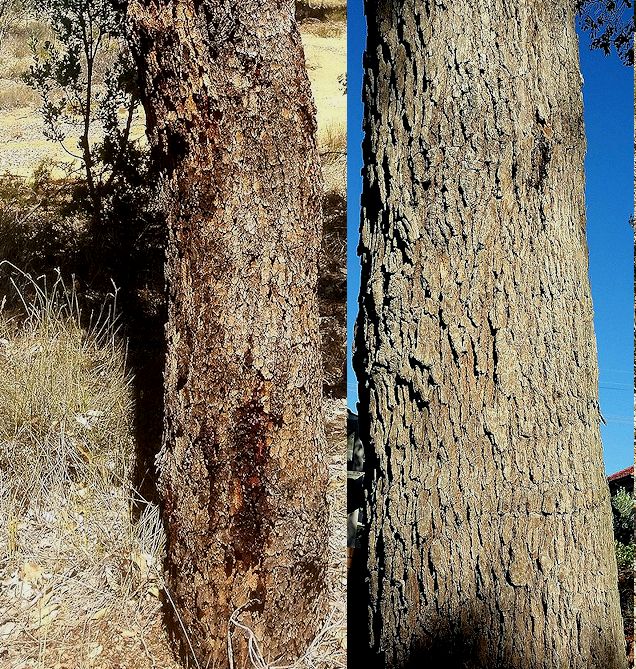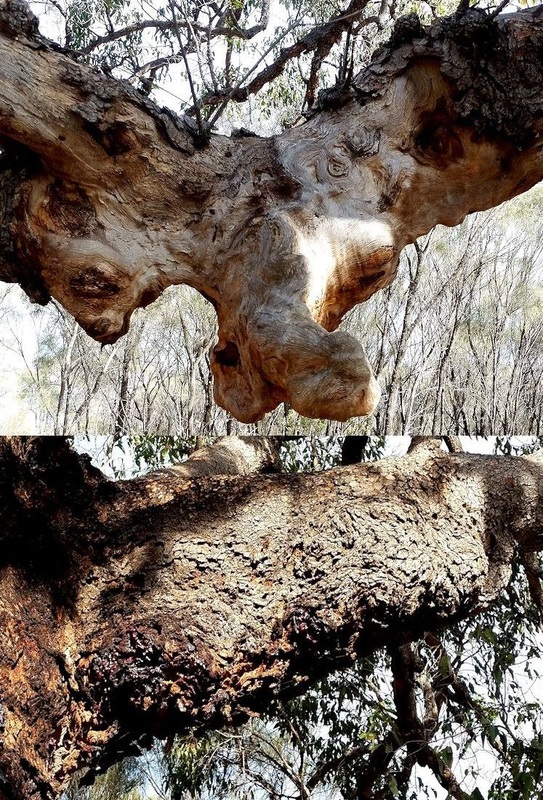Marri trees are flowering profusely this year, possibly due to the February rains. However I have noticed a lot of red gum oozing from adult trees and a few have died spontaneously in recent years. The penny dropped when I saw beautiful adult marris in a Perth (and later Narrogin) garden with unblemished bark, in stark contrast to scabby specimens in Foxes Lair. The gum is a defence mechanism against damage by mainly woodborers.
As Foxes Lair is on the eastern edge of marri range, marris are under more water stress, slower growing, and more susceptible to parasites.
However as rainfall decreases and temperatures rise I fear that marri, jarrah and bull banksia may slowly be replaced by scrub and mallees in the reserve.
A number of factors have been suggested
- Marri Canker (Quamabalaria coryecup) disease is killing marris in higher rainfall areas. Luckily I haven’t seen the characteristic symptoms here
- Wildfire damage. Marri is more susceptible to fire damage than jar and wandoo. I went to an area opposite Williams Road that had marris scattered in amongst dense Dryandra nobilis scrub where the fire was most intense in 2009, and sure enough found clear fire damage. Interestingly the scars had healed with relatively little associated insect damage, and on closer observation I noticed that the scar often been affected by prior damage as there were 2 concentric scars and the exposed wood was sometimes burnt. The reserve was burnt in the 1970’s and 4WD vehicles also used to career through the bush and may have damaged trees. I also noticed that younger trees were less likely to have the scars. Regular low intensity fires that don't burn through the outer bark promote healthier trees that are more able to resist insect attack. I have recommended that scheduled cool burns in a mosaic pattern with each bay burnt every 10+ year to keep biodiversity in the reserve be included in the Foxes Lair management plan.
- Borer damage can be easily spotted by copious outpouring of kino (red gum) from a single point, and sometimes a multiple exudations it bark splits. Kino outpours are a natural reaction from the tree to drown invading insects. Water-stressed trees are more liable to insect attack because there is less and thicker kino and it has more sugars that attract insects. The warming climate is also affecting insects’ biology by making them come out of dormancy earlier. DPAW was investigating insect damage in the reserve in the late nineties.
- Spontaneous splitting? DPAW colleague Peter White reminded me that gum bands occur routinely in marri wood, and that some smooth barked eucalypts have splits in their bark following large variations in rainfall.
A lot of these splits have healed.
When I shaved the rough bark back from a split, I found live flesh underneath the split with bark on either side. I have also noticed tumorous type growths on old marri branches, but suspect insect involvement.











